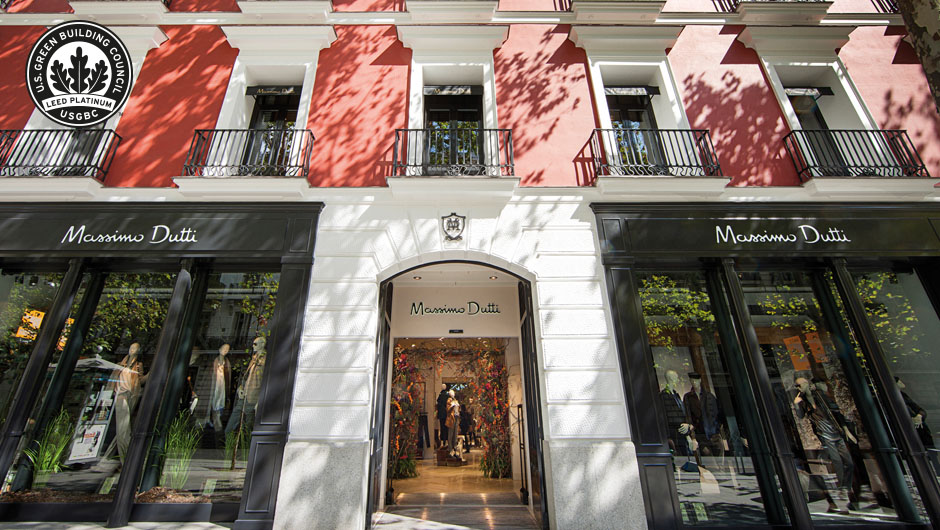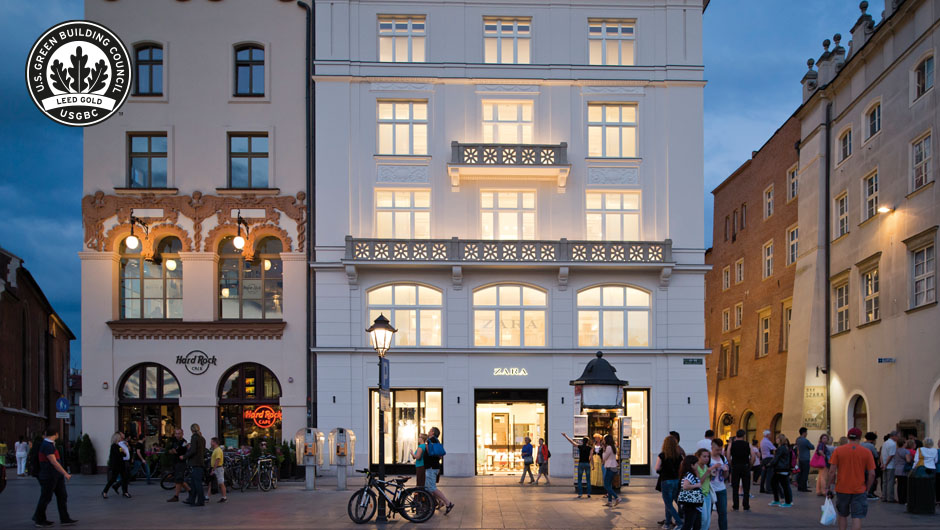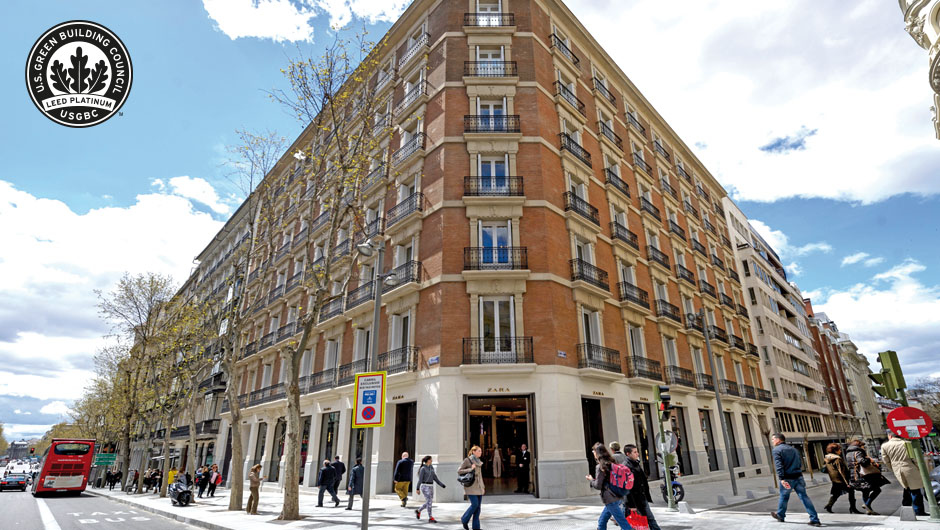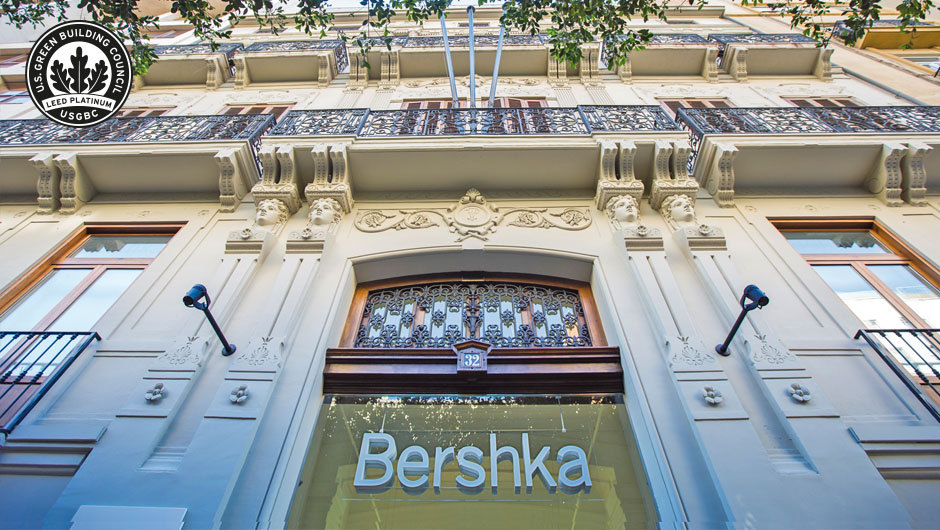Energy and Climate Change Strategy
With the Green to Wear standard, we guarantee the compliance with our Environmental Policy, from which arise the Inditex Strategies for Water, Biodiversity and Energy, with wich the Group attempts to confront the entire cycle of creation, manufacture and placement on the market of the items from a sustainable point of view. If the Water and Biodiversity strategies have their main field of action in the first stages of the business model (design, choice of prime materials and manufacture processes), the Energy and Climate Change Strategy of Inditex is focused on promoting efficient and rational use of the energy resources, reducing greenhouse gas emissions and collaborating on the fight against climate change, therefore its main point of action is the logistics of the Group and the stores.

During 2014 we have continued to make progress on the reduction of the energy consumption and emissions derived from the generation of energy, acting in the entire chain of value. Producing more than 50% in proximity, the energy consumed in the shipment is notably reduced and the transport is improved through the development of sustainable logistics measures. Also, we avail of reuse and recycling circuits for the boxes, hangers, plastics and alarms that are used in the shipment of items to the eco-efficient stores, and thus tend towards a circular economy which is defined as the second priority of the Seventh Environmental Plan of Action of the European Union to transform the European Union into a competitive, green and efficient economy in relation to the use of resources and low in CO2emissions.
Environmental management in head offices and logistic centres
To ensure that our items leave the smallest carbon footprint possible, we continue to improve the energy efficiency and reduction of emissions at the logistic centres, the stores and the head offices of Inditex and its brands. 2014 has been a period with milestones for the Group in this area with the launch of maximum energy efficiency facilities such as the Inditex logistic centre in Cabanillas (Guadalajara), the Inditex Technological Centre in Arteixo (A Coruña) or the opening of 343 eco-efficient stores.
For the management and control of emissions, we have a tool that permits real time calculation in conformance with GHG Protocol and that proposes improvement plans for reduction of the same. This tool is already in service in Tempe. Furthermore, in 2013 work began to include an energy management system in the ISO 14001 Environmental Management System.
Optimisation of packaging and waste
In order to achieve the proposed objectives for reducing energy consumption, we continuously improve our logistics system, with maximum optimisation of the volumes of our transport and reducing the packaging used. In 2014, our efforts in this area have focused on developing efficiency projects that have achieved optimisation of shipments, improved occupation and a total reduction of 921 trucks (1.9 million kilometres) in exports to Europe.
Also, packaging has been optimised, improving the efficiency of the process (greater number of units per package). The set of standards and specifications for packaging, common to all suppliers, permits optimisation of the packaging process, as well as management of waste and the process of distribution and logistics. We have chosen more sustainable materials and have increased the reuse, evaluation and separation of waste, facilitating recycling tasks. For example, there has been a reduction of 13,500 m3 of cardboard and reuse of 215,000 tubes of this material. These initiatives imply, as well as economic savings, a significant environmental benefit, as they reduce the consumption of natural resources and the energy expenditure associated with its manufacture and recycling.
Also, at our stores we avail of the Waste Minimisation Plan that, together with the store Waste Management Manual, allows us to reduce the generation of waste and to improve management of the same. In 2014, 100% of the alarms used in the stores were reused, recycling 672,377,823 units, as well as a total of approximately 79 million plastic hangers used in the shipping of items to the store.
Logistic Centre of Cabanillas
(Guadalajara, Spain)
- 130,000 meters squared
- The most recent Inditex logistic centre in Cabanillas (Spain), 50 kilometres from Madrid, has received the environmental construction certificate LEED Gold
- In both cases, these independent certificates accredit that the construction and maintenance of the centres comply with the requirements of sustainable architecture and efficiency in the installations of lighting, isolation and HVAC
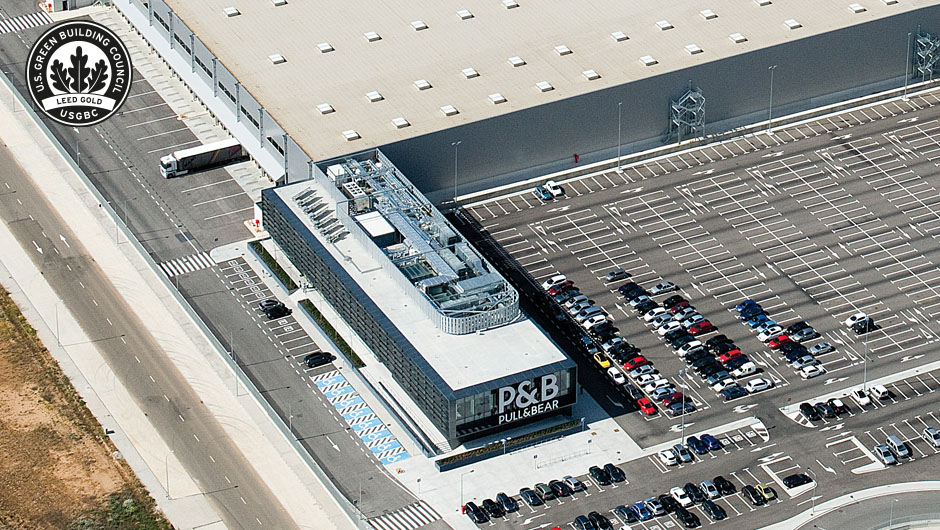
Inditex Technological Centre
(A Coruña, Spain)
- 4,000 meters squared
- 35% energy savings with respect to a conventional facility
- The Inditex Technological Centre,, constructed following the sustainability parameters and using recycled materials of local origin, is the trial laboratory for all new technological initiatives in all processes. It avails of the latest technology that guarantees maximum safety in terms of reliability of the infrastructure and the highest energy efficiency possible. It is the only centre with these characteristics in the world that holds the maximum certification for reliability and the maximum certification for sustainable building (Tier IV and Platinum LEED, maximum category in relation to building sustainability, granted by the U.S.

